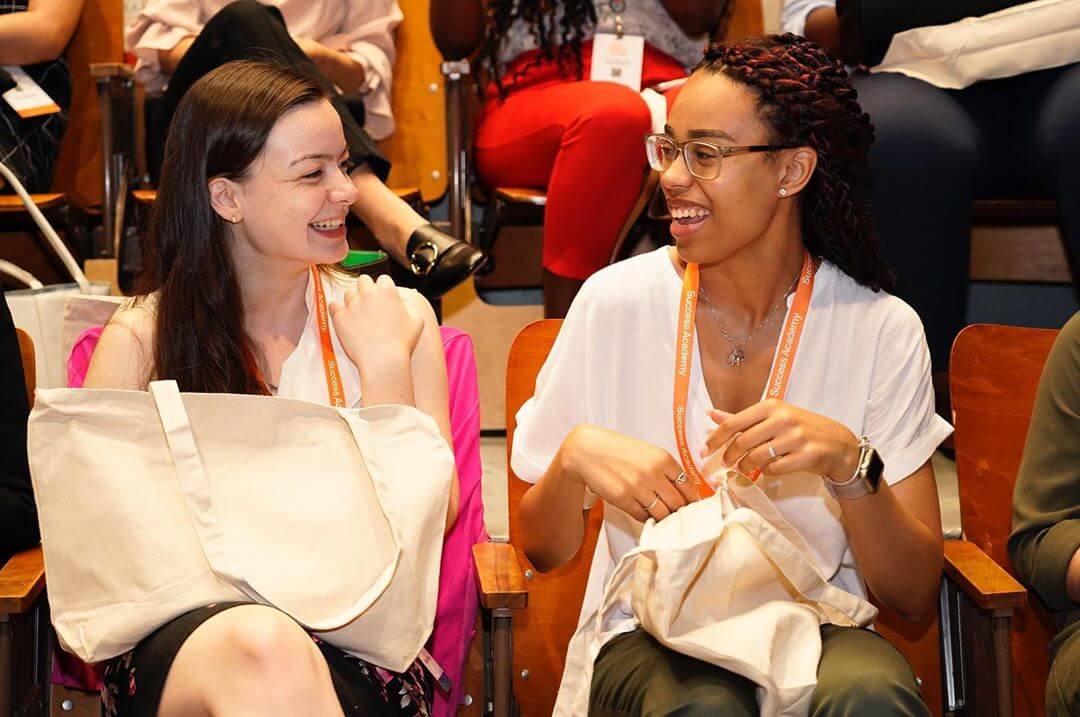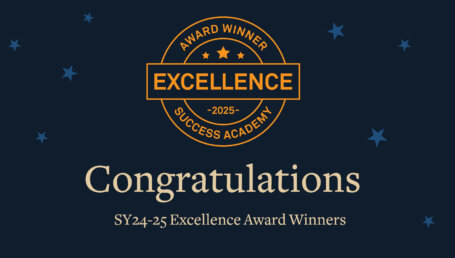
The murder of George Floyd and the ensuing national protests in the spring brought on a renewed attention to and awareness of racism and how it shows up in our lives and institutions. As a result, organizations across the country have been engaging in a process of critical self-evaluation, particularly around workforce diversity, equity, and inclusion. As part of its anti-racism agenda, Success Academy has also been engaged in this work of reflection and improvement. To find out how the organization approaches diversity in hiring and what our plans are for the coming year, we spoke to Kristin Irish, Leader, New Teacher Talent Acquisition at SA.
What was going on with Talent Acquisition when you started at SA?
I started here in early 2019, about a year after Aparna [Ramaswamy] arrived as Chief Human Capital Officer. She was undertaking big changes across the entire Human Capital function. At the time, she was trying to understand SA’s strengths and weaknesses, to identify growth areas, and determine the kinds of systems and structures that needed to be put in place to fundamentally reimagine our talent acquisition function. Aparna’s ultimate goal is for SA to be an “Employer of Choice” — to be a magnet for attracting great talent, retaining our talent, and being a great place to work, where diversity and inclusion are valued.
So what was the general strategy for recruiting candidates of color?
Developing and executing a multi-year campus recruitment strategy with diversity as a core component was one of the primary responsibilities I was tasked with when I was hired. Because of our mission and the work we do, we did in fact already attract a more diverse candidate pool than many of the large companies I have worked for before. The opportunity to have a substantive, positive impact on historically underserved kids and communities draws in a lot of candidates of color. We also had a diverse team of recruiters, so that was a benefit, but we hadn’t yet developed a concrete and targeted recruitment strategy for diverse candidates.
What steps did you take to improve this aspect of your work?
We focused on identifying and segmenting colleges that we would recruit from and assigned a sourcer and a recruiter to specifically focus on working with historically black colleges and universities (HBCU). In the past, we have had candidates apply and get hired from HBCUs — such as Spelman, Clark Atlanta, and Morehouse — but we needed to build on the knowledge these colleges already had heard of us and develop more intentional partnerships.
Honestly, until recently, we didn’t have these kinds of partnerships with the majority of colleges we hired from. Building relationships with the college diversity clubs and doubling down on HBCUs were key steps that helped get us the results we’ve seen so far. With these staff members focused on minority-serving institutions, we were able to successfully hire candidates from 20 different HBCUs and Hispanic Serving Institutions — a total of 78 new teachers this year. This was only a first step, but the recruitment team will be building on and deepening those relationships this year.
What’s ahead for the coming year? How will SA attract more candidates of color?
Looking ahead, we want to focus on cultivating STEM partnerships with organizations like Black Girls Code, the National Society of Black Engineers, and the Society of Hispanic Professional Engineers. One goal, for example, is to co-host campus events on STEM with Black Girls Code and Reshma Saujani’s Girls Who Code organization. We are also looking at building a relationship with John Rice’s Management Leadership for Tomorrow (MLT). When we scan resumes and search on LinkedIn, we look for affiliations with these types of organizations.
In addition to improving our ability to source strong candidates of color, we plan to also focus on the diversity of our interviewer panels, the diversity of our sourcing and recruitment teams, and representation and outreach among hiring managers. Diversity in all these areas makes a difference when candidates are considering an offer of employment.
Have your priorities been affected by the Black Lives Matters protests of last spring?
I think the protests in many ways affirmed the direction we were already going in and have galvanized us to forge ahead. For example, diversity at the network will be a huge focus this year. Our schools are in a better place than the network in terms of staff diversity — 52% of school staff are people of color, versus 32% at the network. We will be more conscientious and consistent about presenting network hiring managers with a diverse slate of qualified candidates for every role. The Human Capital team is also busy fleshing out an internal leadership development plan focused on BIPOC staff members.
Ultimately, diversity is embedded in our mission. All of us on the Human Capital team share the view of many other staff that it’s important that our workforce reflects the diversity of the scholars and families we serve. I’m proud of the progress we’ve made, and optimistic about the future: The work we started last year has already yielded results, and I think it will truly bear fruit this year as we redouble our efforts!










